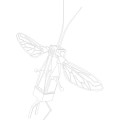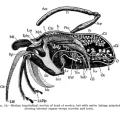Our 2 OpenGreens rooftop gardens host 10 beehives. In summer, the 2 gardens are the home of aproximately 500.000 city honeybees. The Bee Monitoring project transforms the 2 rooftop gardens, which are located at about half a kilometer distance from each other, into communicating vessels and are the start of a green corridor in the city.
The hives in each of the gardens are populated with Apis mellifera carnica. Honeybees are a good bio-indicators. Biological indicators are species that are used to monitor the health of their ecosystem.
They can tell us about the cumulative effects of different pollutants in the ecosystem. Therefore we study the honeybees : their behaviour, their distributed intelligence, their ecology and sociobiology.
By monitoring the bees and beehives with all kinds of sensors, we also study the colony as a community. Examinating the honeybee colony and its inner-workings also allows for an excellent introduction into non-biological subject areas, such as sociology, philosophy, engineering.
We document our research with all kind of media and we use the extracted data & information to make artworks based upon the bees’ behaviour over time. In this section we will handle all biological information on the honey bee colony.

Compound eyes with 6.900 small lenses, each representing a pixel in an … (read more…)


The axes of honeycomb cells are always quasi-horizontal, and the nonangled rows of honeycomb cells are always horizontally (not vertically) aligned. Thus, each cell has two vertical walls, with “floors” and “ceilings” composed of two angled walls. The cells slope slightly upwards, between 9 and 14 degrees, towards the open ends. The hexagon tiles the plane with minimal surface area. Thus, a hexagonal structure uses the least material to create a lattice of cells within a given volume.
Another explanation is that the shape simply results from the … (read more…)